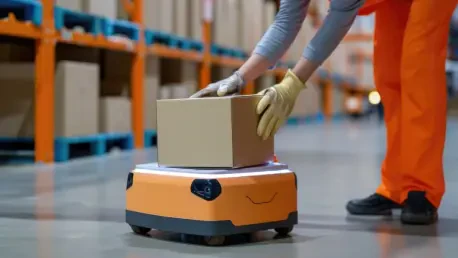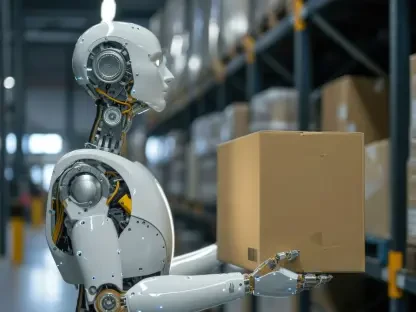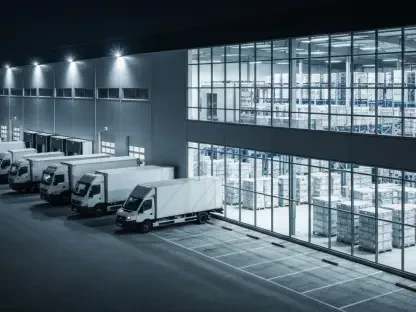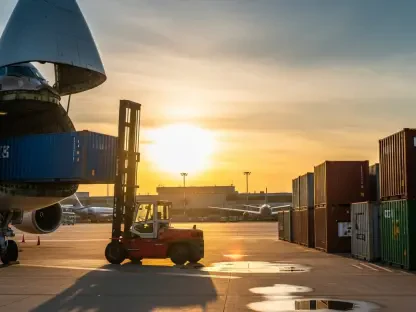Introduction to Warehouse Automation: Why It Matters
In today’s fast-paced supply chain landscape, warehouse automation stands as a cornerstone of efficiency, with over 80% of fulfillment centers adopting some form of automated technology to meet soaring consumer expectations and address rising e-commerce demands. This surge reflects a critical need to streamline operations amid labor shortages, positioning automation not just as a tool but as a strategic imperative. The ability to process orders faster and with greater accuracy has become a competitive edge for businesses striving to keep pace with market dynamics.
Beyond the adoption of robotics and systems, the focus has shifted toward operational mastery, where human-centered strategies play a pivotal role in unlocking automation’s full potential. Success now hinges on integrating technology with workforce dynamics, ensuring that employees are not sidelined but empowered through collaboration and training. This evolution marks a departure from purely tech-driven approaches, emphasizing adaptability and cultural alignment as key drivers of long-term gains.
The scope of automation spans diverse industries, from retail giants like Radial to logistics innovators such as Staples Canada, each leveraging scalable solutions to enhance fulfillment efficiency. As companies grapple with supply chain volatility, the ability to build resilient, adaptable networks has gained prominence. This growing emphasis on scalability and performance underscores why mastering automation is essential for staying ahead in an increasingly complex global market.
Key Trends and Insights in Warehouse Automation
Emerging Shifts and Technological Advancements
A significant trend reshaping warehouse automation is the pivot toward human-centric models, moving away from implementations that focus solely on technological capabilities. This approach recognizes that tools like robotics must complement human workflows rather than replace them, fostering environments where employees and systems collaborate seamlessly. Such a shift prioritizes user engagement over raw output, ensuring sustainable improvements in productivity.
Technological advancements, particularly in artificial intelligence, are also transforming the industry, with solutions like Radial’s LocusONE™ platform enabling real-time data analytics across interconnected networks. These innovations allow isolated warehouse sites to operate as cohesive units, optimizing labor allocation and resource management on a broader scale. AI-driven insights help anticipate bottlenecks, offering managers the agility to respond proactively to operational challenges.
Consumer expectations, coupled with supply chain unpredictability, further drive the need for strategic flexibility in automation deployments. As demand patterns fluctuate, warehouses must adapt swiftly, balancing speed with precision to maintain service levels. This dynamic landscape presents opportunities for companies to rethink traditional models, integrating adaptable systems that can scale with market shifts and ensure consistent performance under pressure.
Market Growth and Future Outlook
The warehouse automation market continues to expand rapidly, fueled by measurable performance gains, such as Radial’s reported 20% productivity increase through precision-focused strategies. These improvements highlight how automation, when executed with a strong foundation, delivers substantial returns on investment. Companies adopting these technologies are not merely keeping up but are setting new benchmarks for operational efficiency across the sector.
Looking ahead, the market shows immense potential, with data-driven decision-making at the forefront of innovation. Intelligent systems that integrate real-time analytics are expected to redefine fulfillment operations, enabling predictive planning and resource optimization. Projections indicate that adoption rates will continue to climb over the next few years, as businesses seek to bolster resilience against disruptions through advanced automation frameworks.
This growth trajectory also points to an increased focus on scalability, where interconnected networks play a central role in managing multi-site operations. The ability to replicate success across facilities, supported by standardized processes, positions automation as a cornerstone of future supply chain strategies. As the industry evolves, the integration of smarter, more adaptive technologies promises to enhance both efficiency and responsiveness in fulfillment ecosystems.
Challenges in Implementing Warehouse Automation
Implementing automation in warehouses often encounters significant hurdles, with resistance to change ranking high among them. Employees and management alike may hesitate to embrace new systems, fearing job displacement or workflow disruptions, which can stall progress. Addressing this requires clear communication about the benefits of automation and its role in supporting, rather than replacing, human efforts.
Technological barriers also pose challenges, particularly around system compatibility and integration with existing infrastructure. High initial costs further complicate adoption, as businesses must justify substantial investments while managing potential downtime during deployment. These obstacles necessitate a phased approach, where pilot programs and incremental upgrades help mitigate risks and build confidence in the technology.
Overcoming these challenges demands a commitment to quality over haste, as rushing implementation can lead to costly errors. Drawing from examples like North Bay Distribution, fostering a culture of adaptability proves effective, where teams are encouraged to view automation as an evolving tool rather than a static fix. Strategic planning, paired with robust training programs, ensures smoother transitions and maximizes the likelihood of sustained success in automated environments.
Navigating the Regulatory and Compliance Landscape
Warehouse automation operates within a complex web of regulatory considerations, with safety standards for automated systems taking center stage. Ensuring that robotics and machinery meet stringent guidelines is critical to protecting workers and avoiding operational setbacks. Compliance with these rules often requires ongoing audits and updates to equipment, adding layers of responsibility to implementation efforts.
Labor laws also play a significant role, particularly in how automation integrates with human workforces. Regulations governing workforce reductions or reassignments must be navigated carefully to maintain fair practices and avoid legal repercussions. Additionally, data security emerges as a key concern, especially with AI and real-time dashboards handling sensitive performance metrics, necessitating strict adherence to privacy standards.
Structured approaches, such as Radial’s codified best practices, demonstrate how compliance can streamline automation rollouts while minimizing risks. By aligning with regulatory frameworks from the outset, companies can avoid costly delays and build trust with stakeholders. Prioritizing adherence to safety, labor, and data protection standards not only ensures legal compliance but also reinforces operational integrity across automated systems.
The Future of Warehouse Automation: Opportunities and Innovations
The trajectory of warehouse automation points toward a landscape dominated by AI and enhanced data visibility, with the potential to revolutionize fulfillment processes. These technologies enable predictive analytics, allowing managers to address issues before they escalate, while scalable network designs support multi-site coordination. Such advancements promise to elevate efficiency to unprecedented levels, reshaping how warehouses respond to demand.
Emerging disruptors, including supply chain unpredictability, underscore the importance of flexible partnerships and adaptive strategies. North Bay Distribution’s approach to scalable networks illustrates how anticipating volatility through modular systems can safeguard operations against sudden shifts. This adaptability, paired with strong vendor relationships, positions companies to thrive in uncertain conditions without sacrificing performance.
Continuous improvement and employee engagement remain vital to driving innovation, ensuring that automation evolves alongside workforce needs. Global economic factors, such as fluctuating labor costs and trade dynamics, further influence adoption rates, pushing businesses to balance investment with agility. As the industry progresses, the interplay of technology, human collaboration, and strategic foresight will define the next wave of transformative opportunities in warehouse automation.
Conclusion: Building a Roadmap for Automation Success
Reflecting on the insights gathered, it becomes evident that warehouse automation thrives when grounded in quality, human collaboration, and adaptability. Industry leaders consistently highlight that success stems from prioritizing precision over speed, ensuring systems are robust before scaling. The human element stands out as a linchpin, with cultural alignment and training proving indispensable in maximizing technology’s impact.
Looking back, the role of data-driven strategies also emerges as a game-changer, transforming raw metrics into actionable insights that boost both efficiency and morale. Challenges like resistance to change and regulatory hurdles are navigated through structured approaches and a commitment to continuous improvement. These lessons shape a deeper understanding of automation as a journey of iterative growth rather than a one-time fix.
Moving forward, fulfillment executives should focus on fostering user adoption by investing in contextual training and supportive cultures that empower teams. Embracing iterative enhancements through daily feedback loops can keep systems agile, while partnerships with flexible vendors offer a buffer against supply chain volatility. By balancing technological innovation with human ingenuity, businesses can chart a path to sustained growth, turning automation into a catalyst for resilience and long-term competitive advantage.









